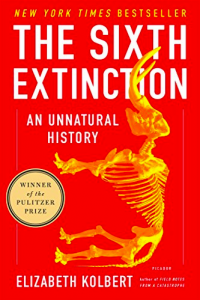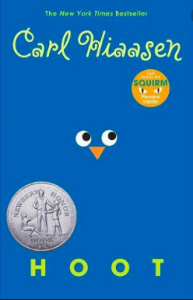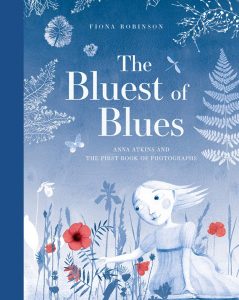NOMA’s Learning and Engagement staff suggests the following books related to themes of nature and ecology. In partnership with Octavia Books, links have been provided to purchase books through this independent store based in New Orleans.
For Adults
The Sixth Extinction: An Unnatural History by Elizabeth Kolbert Picador, Henry Holt & Co., 2014, ISBN: 9780805092998
https://www.octaviabooks.com/book/9780805092998
Over the last half-billion years, there have been five mass extinctions, when the diversity of life on earth suddenly and dramatically contracted. Scientists around the world are currently monitoring the sixth extinction, predicted to be the most devastating extinction event since the asteroid impact that wiped out the dinosaurs. In prose that is frank, entertaining, and deeply informed, Elizabeth Kolbert tells us why and how human beings have altered life on the planet in a way no species has before. Providing a moving and comprehensive account of the disappearances occurring before our very eyes, Kolbert shows how the sixth extinction is likely to be mankind’s most lasting legacy, compelling us to rethink the fundamental question of what it means to be human.
The Hidden Life of Trees: What They Feel, How They Communicate — Discoveries from a Secret World by Peter Wohlleben, Greystone Books, 2016, ISBN: 9781771642484
https://www.octaviabooks.com/book/9781771642484
Are trees social beings? In this international bestseller, forester and author Peter Wohlleben convincingly makes the case that the forest is a social network. He draws on scientific discoveries to describe how trees are like human families: tree parents live together with their children, communicate with them, support them as they grow, share nutrients with those who are sick or struggling, and even warn each other of impending dangers. Wohlleben shares his deep love of woods and forests, explaining the amazing processes of life, death, and regeneration he has observed in his woodland.
Mr. Wilson’s Cabinet of Wonder: Pronged Ants, Horned Humans, Mice on Toast, and Other Marvels of Jurassic Technology by Lawrence Weschler, Vintage Books, 1996, ISBN: 9780679764892
https://www.octaviabooks.com/book/9780679764892
Pronged ants, horned humans, a landscape carved on a fruit pit–some of the displays in David Wilson’s Museum of Jurassic Technology are hoaxes. But which ones? As he guides readers through an intellectual hall of mirrors, Lawrence Weschler revisits the 16th-century “wonder cabinets” that were the first museums and compels readers to examine the imaginative origins of both art and science.
Animal, Vegetable, Miracle: A Year of Food Life by Barbara Kingsolver, Harper Perennial, 2008, ISBN: 9780060852566
https://www.octaviabooks.com/book/9780060852566
Author Barbara Kingsolver and her family abandoned the industrial-food pipeline to live a rural life—vowing that, for one year, they’d only buy food raised in their own neighborhood, grow it themselves, or learn to live without it. Part memoir, part journalistic investigation, Animal, Vegetable, Miracle is an enthralling narrative that will open your eyes in a hundred new ways to an old truth: You are what you eat.
For Young Adults
Hoot by Carl Hiaasen, Ember, 2004, ISBN: 9780375829161
https://www.octaviabooks.com/book/9780375829161
Everybody loves Mother Paula’s pancakes. Everybody, that is, except the colony of cute but endangered owls that live on the building site of the new restaurant. Can the awkward new kid and his feral friend prank the pancake people out of town? Or is the owls’ fate cemented in pancake batter?
Braiding Sweetgrass: Indigenous Wisdom, Scientific Knowledge, and the Teaching of Plants by Robin Wall Kimmerer, Milkweed Editions, 2014, ISBN: 9781571313560
https://www.octaviabooks.com/book/9781571313560
Drawing on her life as an indigenous scientist, a mother, and a woman, Kimmerer shows how other living beings—asters and goldenrod, strawberries and squash, salamanders, algae, and sweetgrass—offer us gifts and lessons, even if we’ve forgotten how to hear their voices. In a rich braid of reflections that range from the creation of Turtle Island to the forces that threaten its flourishing today, she circles toward a central argument: that the awakening of a wider ecological consciousness requires the acknowledgment and celebration of our reciprocal relationship with the rest of the living world. For only when we can hear the languages of other beings will we be capable of understanding the generosity of the earth, and learn to give our own gifts in return.
Where the Crawdads Sing by Celia Owens, GP Putnam’s Sons, 2018, ISBN: 9780735219090
https://www.octaviabooks.com/book/9780735219090
For years, rumors of the “Marsh Girl” have haunted Barkley Cove, a quiet town on the North Carolina coast. So in late 1969, when handsome Chase Andrews is found dead, the locals immediately suspect Kya Clark, the so-called Marsh Girl. But Kya is not what they say. Sensitive and intelligent, she has survived for years alone in the marsh that she calls home, finding friends in the gulls and lessons in the sand. Then the time comes when she yearns to be touched and loved. When two young men from town become intrigued by her wild beauty, Kya opens herself to a new life–until the unthinkable happens.
Where the Crawdads Sing is at once an exquisite ode to the natural world, a heartbreaking coming-of-age story, and a surprising tale of possible murder. Owens reminds us that we are forever shaped by the children we once were, and that we are all subject to the beautiful and violent secrets that nature keeps.
For Kids
The Bluest Blue: Anna Atkins and the First Book of Photographs by Fiona Robinson, Harry N. Abrams, 2019, ISBN: 9781419725517
Recommended Ages: 7-11
https://www.octaviabooks.com/book/9781419725517
A gorgeous picture book biography of botanist and photographer Anna Atkins–the first person to ever publish a book of photography
After losing her mother very early in life, Anna Atkins (1799–1871) was raised by her loving father. He gave her a scientific education, which was highly unusual for women and girls in the early 19th century. Fascinated with the plant life around her, Anna became a botanist. She recorded all her findings in detailed illustrations and engravings, until the invention of cyanotype photography in 1842. Anna used this new technology in order to catalogue plant specimens—a true marriage of science and art. In 1843, Anna published the book Photographs of British Algae: Cyanotype Impressions with handwritten text and cyanotype photographs. It is considered the first book of photographs ever published. Weaving together histories of women, science, and art, The Bluest of Blues will inspire young readers to embark on their own journeys of discovery and creativity.
Water by Frank Asch, HMH Books for Young Readers, 2000, ISBN: 9780152023485
Recommended Ages: 4-7
https://www.octaviabooks.com/book/9780152023485
Water is beautiful and useful and, in its many forms, vital to life. In this lyrical companion to The Earth and I, Frank Asch encourages young readers to appreciate anew one of our most precious resources.
Bees, Snails and Peacock Tails: Patterns and Shapes … Naturally by Betsy Franco, Margaret K. McElderry Books, 2008, ISBN: 9781416903864
Recommended Ages: 3-8
https://www.octaviabooks.com/book/9781416903864
Come explore the hidden shapes and patterns in nature. The peacock’s flashy tail is a masterpiece of color and shape. A buzzing beehive is built of tiny hexagons. Even a snake’s skin is patterned with diamonds.
Poet Betsy Franco and Caldecott Honor winner Steve Jenkins bring geometry to life in this lively, lyrical look at the shapes and patterns that can be found in the most unexpected places.
The Tiny Seed by Eric Carle, Little Simon, 2009, ISBN: 9780689842443
Recommended Ages: 3-8
https://www.octaviabooks.com/book/9780689842443
In autumn, a strong wind blows flower seeds high in the air and carries them far across the land. One by one, many of the seeds are lost — burned by the sun, fallen into the ocean, eaten by a bird. But some survive the long winter and, come spring, sprout into plants, facing new dangers — trampled by playing children, picked as a gift for a friend. Soon only the tiniest seed remains, growing into a giant flower and, when autumn returns, sending its own seeds into the wind to start the process over again.
Eric Carle’s eloquent text and brilliant collages turn the simple life cycle of a plant into an exciting story, a nature lesson, and an inspiring message of the importance of perseverance.
A Tree for All Seasons by Robin Bernard, National Geographic Children’s Books, 2001, ISBN: 0792266749
Recommended Ages: 8 – 12
https://www.octaviabooks.com/book/9780792266747
This eye-catching, large format, photographic picture book will delight beginning readers. All the vocabulary, language, and concepts in this carefully researched, 16-page book is geared to young children so that they can practice their reading skills as they discover, explore, and learn.


